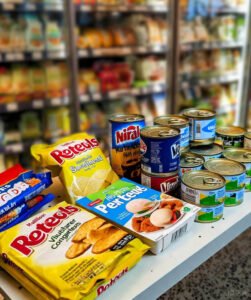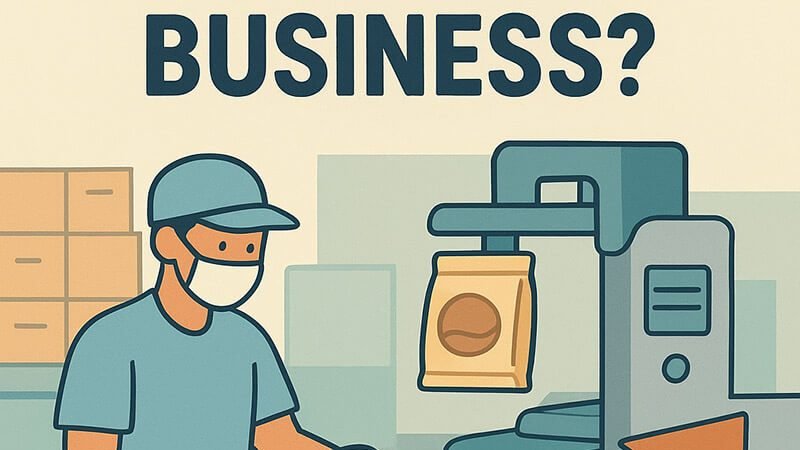Is Food Packaging a Good Business?
Table of Contents
Introduction
The food packaging industry is one of the most essential and resilient sectors in the global economy. Every food product that reaches consumers requires some form of packaging, making this industry indispensable to the food supply chain. But with increasing environmental concerns, evolving consumer preferences, and technological innovations, is food packaging still a good business opportunity in today’s market? This comprehensive analysis explores the viability, profitability, and future prospects of entering the food packaging business.
The Food Packaging Market: An Overview
The global food packaging market represents a massive and continuously expanding industry. Valued at hundreds of billions of dollars, the sector serves virtually every segment of the food industry, from fresh produce and meat to processed foods, beverages, and ready-to-eat meals. The sheer scale of food consumption worldwide ensures a constant and growing demand for packaging solutions.
What makes food packaging particularly attractive as a business is its recession-resistant nature. Regardless of economic conditions, people need to eat, and food needs to be packaged. This inherent stability provides a solid foundation for businesses in this sector. The market encompasses various packaging types including flexible packaging, rigid containers, paperboard boxes, glass bottles, metal cans, and increasingly, sustainable alternatives made from biodegradable materials.
Geographically, the food packaging market shows robust growth across both developed and emerging economies. Developed nations drive demand through convenience foods and premium packaging, while emerging markets experience growth due to rising incomes, urbanization, and the expansion of modern retail channels. This global reach provides multiple entry points and expansion opportunities for businesses considering this sector.
Key Growth Drivers in the Industry
Several powerful factors are driving sustained growth in the food packaging industry. The global population continues to expand, with projections suggesting we’ll reach nearly ten billion people by 2050. This demographic growth directly translates to increased food consumption and, consequently, greater packaging demand. Additionally, urbanization trends mean more people are living in cities where packaged foods are essential due to lifestyle demands and distribution logistics.
Consumer behavior has shifted dramatically toward convenience foods, ready-to-eat meals, and on-the-go snacks. Modern lifestyles leave less time for food preparation, making packaged foods increasingly popular. The rise of e-commerce and food delivery services has created entirely new packaging requirements, as products must withstand shipping and maintain quality during transit. This trend accelerated significantly during and after the global pandemic, establishing new consumer habits that continue to drive packaging innovation.
Food safety regulations and quality standards have become increasingly stringent worldwide. Modern packaging must not only protect food from contamination but also extend shelf life, maintain freshness, and provide tamper-evident features. These requirements create opportunities for businesses that can develop innovative packaging solutions meeting these elevated standards. Furthermore, the growing middle class in developing countries is demanding higher-quality packaged foods, driving market expansion in regions that previously relied heavily on fresh, unpackaged products.

Business Opportunities in Food Packaging
The food packaging sector offers diverse entry points for entrepreneurs and established businesses alike. Manufacturing packaging materials represents the most capital-intensive but potentially lucrative opportunity. This includes producing plastic films, containers, paperboard, glass, or metal packaging. While requiring significant upfront investment in equipment and facilities, manufacturers can achieve substantial economies of scale and long-term contracts with major food producers.
Packaging machinery manufacturing and supply represents another promising avenue. Food producers require specialized equipment for filling, sealing, labeling, and wrapping their products. Businesses that design, manufacture, or distribute this equipment serve an essential role in the industry. As automation and efficiency become increasingly important, demand for advanced packaging machinery continues to grow. This segment often enjoys higher profit margins and the opportunity to provide ongoing service and maintenance contracts.
Design and consulting services have emerged as valuable niches within the food packaging ecosystem. Companies need experts who understand both the technical requirements and marketing aspects of packaging. Businesses specializing in package design, branding, regulatory compliance, and sustainability consulting can build profitable operations without the heavy capital requirements of manufacturing. The specialized knowledge required creates barriers to entry that protect established consultants from excessive competition.
Distribution and supply services for packaging materials offer opportunities for businesses that can efficiently manage logistics and inventory. Food producers often prefer working with reliable suppliers who can provide consistent quality and timely delivery rather than dealing directly with multiple manufacturers. Regional distributors who build strong relationships with food processors can establish stable, recurring revenue streams.
Challenges and Considerations
Despite its attractiveness, the food packaging business faces several significant challenges that potential entrants must carefully consider. Environmental concerns and sustainability pressures have intensified dramatically in recent years. Plastic packaging, while functional and cost-effective, faces increasing regulatory restrictions and consumer backlash. Businesses must invest in developing or adopting sustainable alternatives, which often come with higher costs and technical challenges. The transition to eco-friendly packaging materials requires research, development, and potentially retooling production facilities.
Competition in the food packaging industry can be fierce, particularly in established markets. Large multinational corporations dominate many segments, leveraging economies of scale that smaller entrants struggle to match. Price competition can squeeze margins, especially when serving large food manufacturers who possess significant bargaining power. New businesses must identify niche markets or offer differentiated products to compete effectively against established players.
Regulatory compliance presents an ongoing challenge and cost. Food packaging must meet strict safety standards, which vary by country and region. Materials must be approved for food contact, and packaging must accurately display required information. Keeping pace with changing regulations requires dedicated resources and expertise. Additionally, liability concerns mean businesses must maintain rigorous quality control and testing protocols to prevent contamination or safety issues that could result in costly recalls or legal action.
Raw material costs and supply chain volatility impact profitability in the packaging business. Petroleum-based plastics fluctuate with oil prices, while paper and cardboard costs vary with pulp markets. Recent global supply chain disruptions have highlighted the vulnerability of businesses dependent on imported materials or components. Successful packaging businesses must develop strategies for managing input costs and maintaining supply continuity.
Profitability and Investment Potential
The profitability of food packaging businesses varies considerably depending on the specific segment, scale of operations, and business model. Manufacturing operations typically operate on relatively thin margins, often in the single digits to low teens percentage range, but generate substantial absolute profits through high volumes. The capital-intensive nature means significant upfront investment, but established manufacturers with efficient operations and long-term contracts can achieve attractive returns on investment over time.
Specialized packaging solutions, particularly those addressing specific technical challenges or serving niche markets, often command premium pricing and higher margins. Companies producing innovative sustainable packaging, specialized barrier films, or advanced active packaging systems can achieve margins of twenty percent or higher. The key to profitability in these segments lies in maintaining technological advantages and protecting intellectual property.
Service-oriented businesses within the food packaging ecosystem, including equipment maintenance, consulting, and design services, typically enjoy higher profit margins than manufacturing operations. With lower capital requirements and overhead costs, these businesses can achieve profitability more quickly and scale efficiently. However, revenue potential may be more limited compared to large-scale manufacturing operations.
Return on investment timelines vary significantly. Equipment and machinery businesses might achieve profitability within two to three years with proper market positioning, while large-scale manufacturing facilities may require five to seven years to recoup initial investments. The stability of the industry, however, means that once profitability is achieved, businesses can often maintain consistent performance over extended periods.
Future Trends Shaping the Industry
The food packaging industry is evolving rapidly, driven by technological innovation and changing market demands. Sustainable packaging represents the most significant trend reshaping the industry. Biodegradable materials, compostable packaging, and designs that minimize material use are moving from niche products to mainstream requirements. Businesses that position themselves as leaders in sustainable packaging solutions will likely capture growing market share as regulations tighten and consumer preferences shift.
Smart packaging incorporating technology is emerging as a major innovation frontier. Packages with QR codes, NFC chips, or sensors can provide consumers with detailed product information, track freshness, verify authenticity, and even interact with smartphones. Active packaging that releases preservatives or absorbs oxygen to extend shelf life is becoming more sophisticated and cost-effective. These technologies create new value propositions and differentiation opportunities for packaging businesses.
Personalization and customization are becoming increasingly important in food packaging. Digital printing technologies enable economical short-run production, allowing food brands to create limited editions, regional variations, or even personalized packages. Packaging businesses that invest in flexible, digital production capabilities can serve this growing demand and command premium prices.
Automation and Industry 4.0 technologies are transforming food packaging operations. Smart factories, robotics, and artificial intelligence optimize production efficiency, reduce waste, and improve quality control. Packaging businesses that embrace these technologies can achieve significant competitive advantages through lower costs and superior consistency. However, this trend also requires ongoing investment in technology and workforce training.
Conclusion: Is It Worth Entering?
So, is food packaging a good business? The answer is generally yes, but success requires careful planning, adequate capitalization, and strategic positioning. The industry offers fundamental strengths that make it attractive: essential demand, market size, growth potential, and relative recession resistance. These factors provide a solid foundation for building a sustainable business.
However, success is not guaranteed. The industry’s maturity means competition is intense, and entry barriers can be substantial depending on the chosen segment. Businesses must offer clear value propositions, whether through cost efficiency, innovation, specialized solutions, or superior service. The environmental imperative means that any new entrant must seriously address sustainability from the outset rather than treating it as an afterthought.
For entrepreneurs with adequate capital, technical expertise, and a clear market strategy, food packaging presents excellent opportunities. The key is identifying specific niches or approaches that differentiate your business from established competitors. Whether through sustainable materials, innovative designs, specialized equipment, or superior service, successful packaging businesses find ways to create and defend their market position.
Looking forward, the food packaging industry will continue evolving, driven by sustainability imperatives, technological innovation, and changing consumer behaviors. Businesses that stay ahead of these trends, invest in innovation, and maintain operational excellence can build profitable, enduring enterprises. The fundamental need for food packaging ensures that well-managed businesses in this sector can achieve long-term success and attractive returns on investment.
Partner With Industry Experts
We are a professional food packaging machinery manufacturer, providing cutting-edge solutions for businesses looking to enter or expand in the food packaging industry. Our advanced equipment and expert support help you build efficient, profitable operations that meet tomorrow’s sustainability and quality standards. Contact us today to discover how our machinery can power your food packaging success.
